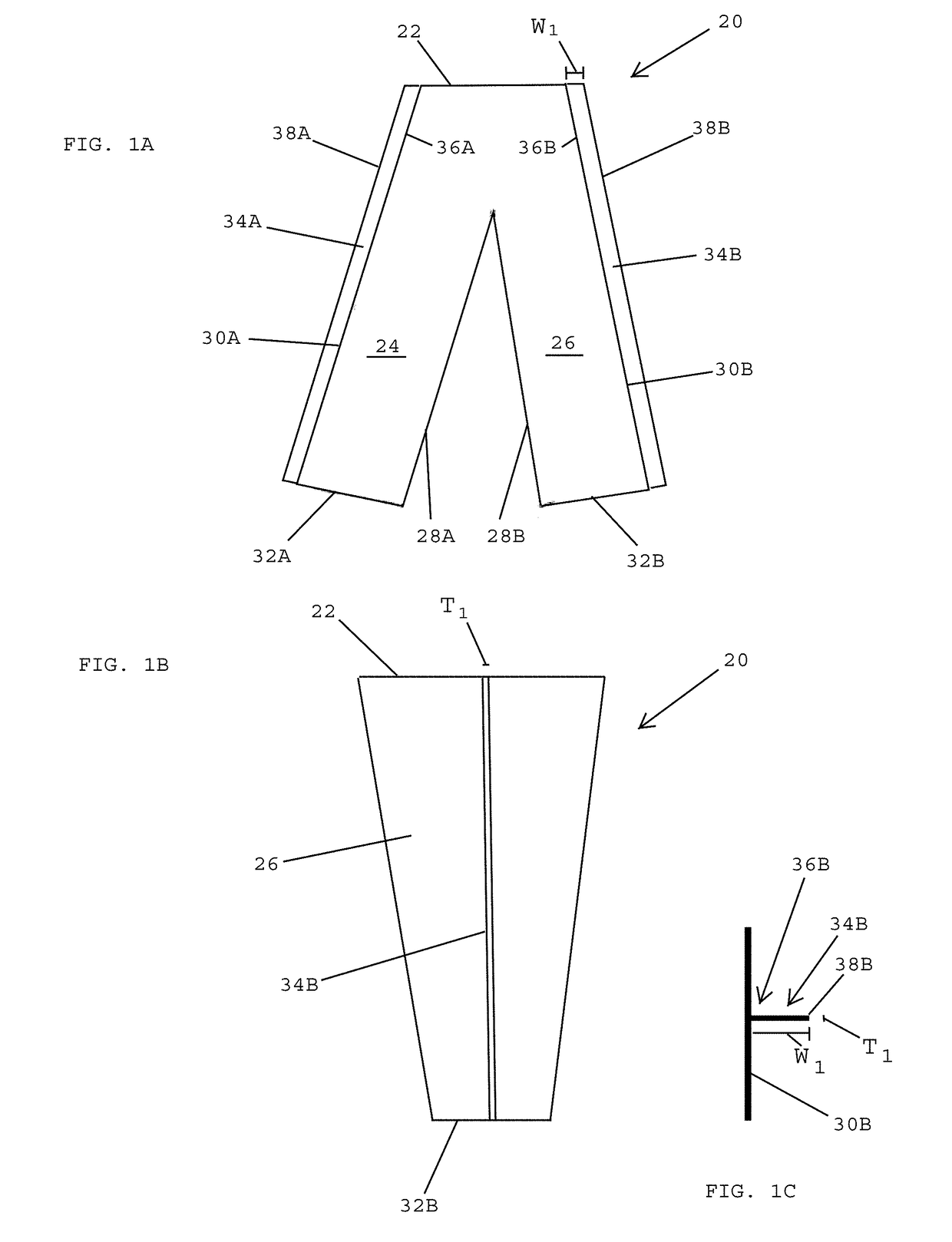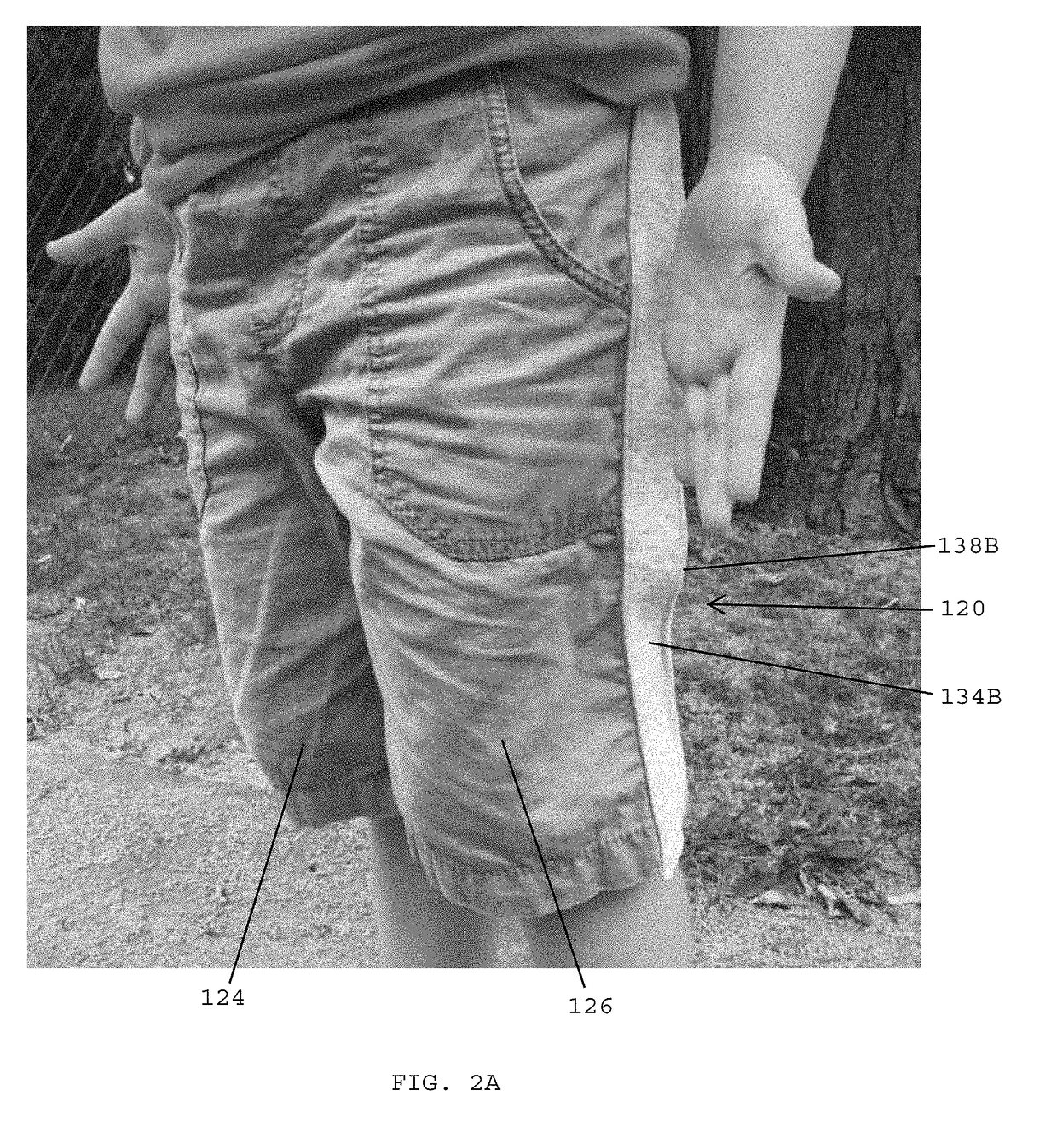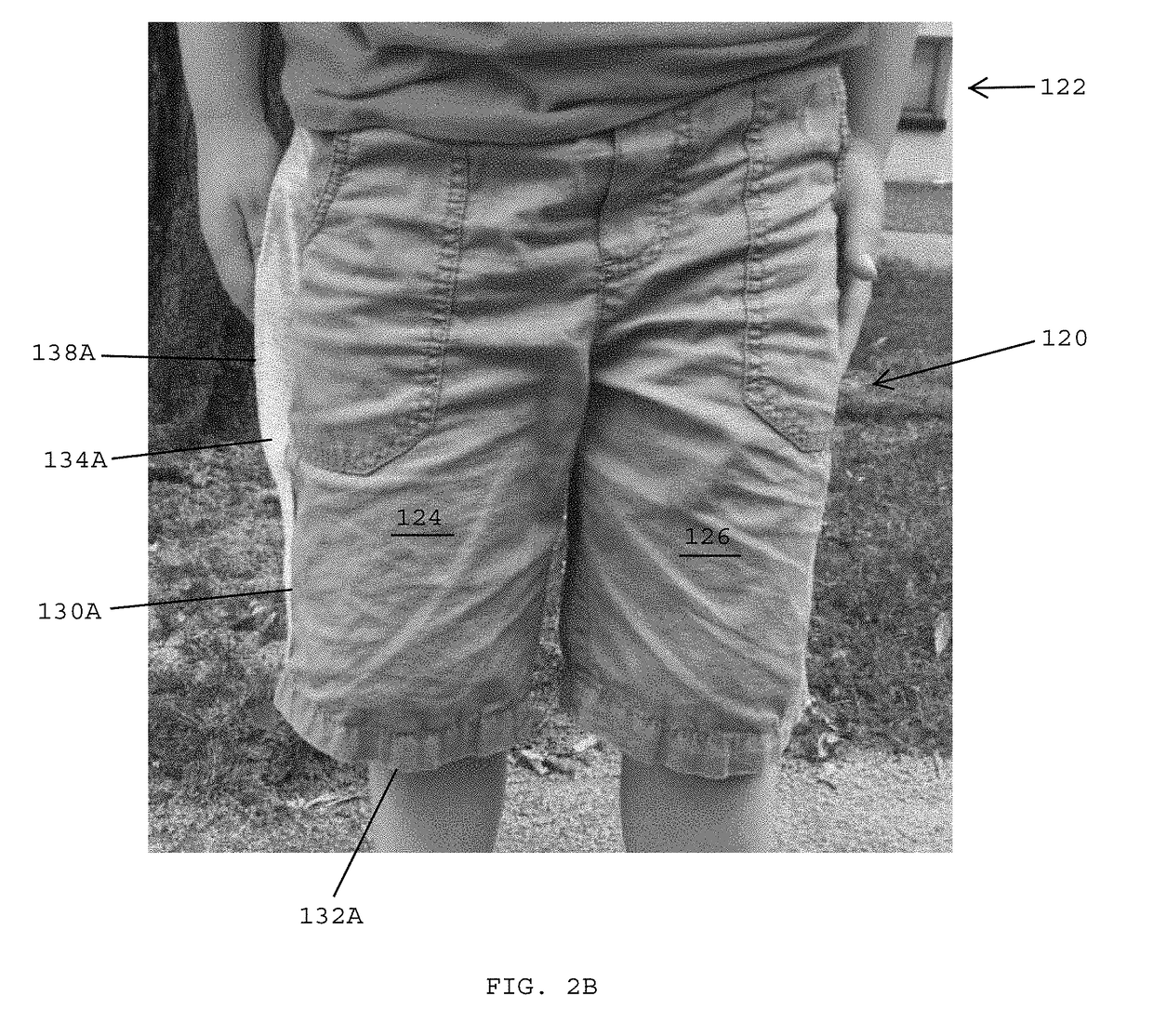Therapeutic clothing having releasably attached sensory strips and stress relieving components incorporated therein
a technology of sensory strips and therapeutic clothing, which is applied in the field of therapeutic clothing, can solve the problems of many test appointments, difficult to complete, and difficult to understand the societal awareness and understanding of asd
- Summary
- Abstract
- Description
- Claims
- Application Information
AI Technical Summary
Benefits of technology
Problems solved by technology
Method used
Image
Examples
Embodiment Construction
[0100]Referring to FIG. 1A, in one embodiment, pants 20 have a waistband 22 located at an upper end and first and second legs 24, 26 that extend down from the waistband 22. The first leg 24 has an inside surface 28A, and an outside surface 30A that extends from the waistband 22 to the lower end 32A of the first leg 24. A first sensory strip 34A is secured to the outer edge 30A of the first leg 24. In one embodiment, the first sensory strip 34A extends from the waistband 22 to the lower end 32A of the first leg 24. In one embodiment, the first sensory strip 34A may extend only part of the way between the waistband 22 and the lower end 32A of the first leg 24. In one embodiment, the first sensory strip 34A has an inner edge 36A that is sewn to the outside surface 30A of the first leg 24, and an outer edge 38A that is free to move. Thus, the first sensory strip 34A is a flap of material that extends outwardly from the outside surface 30A of the first leg 24. In one embodiment, the firs...
PUM
 Login to View More
Login to View More Abstract
Description
Claims
Application Information
 Login to View More
Login to View More - R&D
- Intellectual Property
- Life Sciences
- Materials
- Tech Scout
- Unparalleled Data Quality
- Higher Quality Content
- 60% Fewer Hallucinations
Browse by: Latest US Patents, China's latest patents, Technical Efficacy Thesaurus, Application Domain, Technology Topic, Popular Technical Reports.
© 2025 PatSnap. All rights reserved.Legal|Privacy policy|Modern Slavery Act Transparency Statement|Sitemap|About US| Contact US: help@patsnap.com



